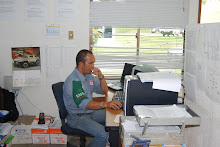Principle 1: Unsafe behaviors do not cause accidents.
Accidents are caused by the reasons for unsafe behavior. These are organizational issues; all behavior is organizationally caused. To achieve excellence, seek the good reasons for poor performance. Too many accident investigations end with placing the blame on an employee's unsafe behavior or failure to identify hazards. The real root cause lies in the organization' s behavior.
Principle 2: Accidents are not the problem; the problems are the problem.
Accidents are visible evidence of systemic deficiencies; if there are accidents, there are problems. Focus on the system particularly from an operational standpoint. The HSE function should not lead this charge. It is the responsibility of operational management.
Principle 3: Safety is not about preventing accidents.
Safety is all about improving the process-proactive changes to improve efficiency and effectiveness of systems that optimize performance and minimize loss.
Principle 4: The process determines all business outcomes (including safety).
If you don't get safety right, none of your other business outcomes will be right. Other outcomes are productivity, quality, reliability, delivery, profitability and sustainability. All outcomes have a common source. Fail in safety and you fail everywhere else.
Principle 5: Accidents are the responsibility of managers, not the fault of employees.
Employees work in the system; managers work on the system; the system causes accidents; employees sustain injury. Firing employees for problems that exist in the system is dead wrong. As a manager, you must look in the mirror and accept your blame. Top management must feel pain and dissatisfaction with past performance and must have the courage to change. They must break out of line, even to the point of exile amongst their peers. There must be a burning desire to transform their style of management and consequently, the culture of the organization.
Principle 6: Minimizing loss is management's Number One responsibility.
To increase the bottom line, managers must effectively manage the middle lines (Hey...I didn't say this; some guy named Peter Drucker did! The only things a manager can manage [plan, organize, direct, control, and monitor] are the middle lines-losses and costs, a/k/a accidents and injury). Many operations managers neglect safety because they feel as it is not their responsibility. Loss is loss regardless of how it is manifested. Losses due to injury are just as devastating as losses due to production miscues.
Principle 7: It's easier (more expensive, but easier) to neglect safety.
Most organizations follow the path of least resistance: "Given the opportunity to do nothing, most managers will." This is especially true when companies experience periods of positive performance. Excellent companies take the path less traveled regardless of circumstances, and it makes all the difference. When safety is ignored it leads to: high insurance costs, excessive losses, adversarial employee relations, litigation, and significant financial crisis. Can your organization really afford to neglect safety?
Principle 8: More training is not the answer.
If employee training was the answer, we wouldn't have the problem. Ninety-two percent of accidents studied were determined to be performance deficiencies, not knowledge deficits. Instead of requiring more training, you must show people how to apply the knowledge that they have. You must display leadership and behavior that employees can model. Wal-Mart has no formal training budget. Their employees learn through peer influence, behavior modeling, and a sound corporate culture. It is no wonder that Wal-Mart is the largest, most successful corporation in the world. In a survey by The Reliability group, employees at companies with the best safety performance indicated the following items as the reasons for their success: Positive labor/management relations, job satisfaction, cheerful/pleasant work environment, job challenge, recognition, rule clarity, equipment safety. Training was #37.
Principle 9: More rules, policies, and procedures WILL NOT make performance safer.
Ninety-percent of companies have documented safety policies and procedures. However, the delta between high and low-performing organizations is virtually nil. Instead of creating new policies and procedures, organizations must create new cultures where safety is the cornerstone. This new culture must be embraced by all employees and championed by leadership.
Principle 10: Progressive discipline does not increase the level of safe behavior.
Quite honestly, disciplinary programs do more harm than good. For every unpleasant management action, there will be an employee reaction. In order words, employees will get even through various methods of sabotage (production delays, equipment damage, feigned injuries, extended time on worker's comp). The real culprit driving workers compensation costs is the traditional management system, which promotes and "us vs. them" work environment. The currently reality is that employees receive 8 negative reinforcements for every positive one. In order to change the culture, employees must receive 4 positive reinforcements for every negative one.
When safety becomes a core value it is transparent, integrated into every aspect of the business, and an equal business factor (along with budget and production)
Rabu, 25 Maret 2009
Langganan:
Posting Komentar (Atom)















.jpg)



.jpg)


.jpg)


Tidak ada komentar:
Posting Komentar